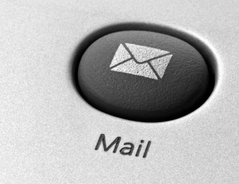[ad_1]
Courtesies in correspondence reflect your relationship with the recipient of your letter. Social hierarchies no longer play a role here, the partners were treated equally in correspondence.
Polite forms in German letters and emails
- Use the salutation “du” for familiar people (first-name friends). This personal salutation is written in lowercase or uppercase. (Lower case was only mandatory until 2006.) Use a confidential “Dear” (e.g. “Dear Klaus”) for a personal address.
- Address people you do not know personally and use the salutation “Sie” in business correspondence. This form of address is the 3rd person plural and is always capitalized.
- Make sure that you use all verbs in the plural with “Sie” (“You informed me…”).
- You use the polite form “Sie” in a letter with different grammatical cases and this naturally changes the word (1st case: you, 2nd case: your, 3rd case: you, 4th case: you). Capitalization is preserved for all forms.
- The salutation “Dear” or “Dear” are common forms of politeness in business letters today.
- Address a person whom you are using the correct name and write “Ms.” or “Mr.” with the family name. If the recipient has a title, then this should also be added (e.g. “Herr Dr. Schmidt”).
- Hierarchical forms of address are considered obsolete and are only used in correspondence between international diplomats. Salutations like “magnificence”, “excellence” and “eminence” are still common.
- If you are writing to a recipient without a specific name, then use the neutral polite form “Dear Sir or Madam”.
You should also pay attention to polite forms when formulating requests, wishes and questions. Here the use of the subjunctive (“Could you please tell me …”) is a good idea.
How helpful do you find this article?
